What Are Quantitative Questions in a Survey? Benefits and Examples
Read More

Have you ever wondered why companies like Link Net, a telecommunication giant, have made it a top priority to boost their customer satisfaction scores? Well because increasing this CX metric directly helped them boost their revenue!
Now, you might be wondering, “What exactly is a CSAT score, and how can it help my business?”
CSAT stands for Customer Satisfaction, and it’s a simple yet powerful CX metric that allows you to measure how satisfied your customers are with your products or services.
But the question is – How to calculate CSAT score?
It’s easier than you might think. All you need is robust CSAT software!
But let’s understand, why you need to calculate it in the first place.
Knowing how to calculate CSAT scores is really important for your business because it does:
Note: Low CSAT scores mean highly unsatisfied customers and vice versa.
Now that you know why you should calculate CSAT score, let’s look at how to calculate it.
Here’s the CSAT formula for calculating the CSAT score:
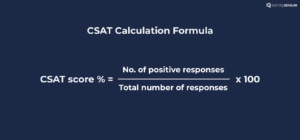
First, identify the satisfied scores on your CSAT scale (1-5 or 1-7).
[Also, make sure that your customers understand this as well]
Here’s an example of calculating the CSAT Score.
Suppose, you send a CSAT survey on a 5-point scale to your 10 customers who used the gift voucher at your store, to know their experience.
| Customers | 1-2 | 3 | 4-5 |
| Amanda | 3 | ||
| Lily | 5 | ||
| Glordiya | 5 | ||
| John | 4 | ||
| Mark | 4 | ||
| Ross | 2 | ||
| Jenny | 4 | ||
| Kate | 5 | ||
| James | 3 | ||
| Henry | 4 | ||
| Total score of all customers = 39 | |||
Now, to calculate the CSAT score:
Your CSAT Score is 39% i.e., the average satisfaction level of the respondents.
If you’re using a rating scale with 3 emoticons, then use the same CSAT score formula.
For example, if 50 customers filled out the survey and only 32 customers clicked on the happy face then your total CSAT score would be:
32/50 x 100= 64%
Your CSAT score is 64%.
How to calculate csat score out of 5?
Imagine you conducted a survey with 100 respondents. The responses on a 5-point scale were as follows:
To calculate CSAT:
The CSAT score on the 5-point scale would be 50%.
Now that you’ve calculated your CSAT Score, it’s time to understand if you have a good CSAT score or not.
A good CSAT score indicates a high level of customer satisfaction. However, the meaning of a ‘good’ score varies across industries and businesses. Generally, a CSAT score
It’s crucial that you interpret CSAT scores alongside qualitative feedback and prioritize continuous improvement to create an effective customer satisfaction strategy and meet their evolving needs.
So far so good?
Let’s delve into knowing CSAT scores by industry.
CSAT Scores vary significantly by industry, reflecting differing customer expectations and service standards. Here’s a summary of average CSAT scores across various sectors for 2024:

Source: Retently 2024 CSAT Industry Benchmarks
Now that you know your industry benchmarks, head on to learn how to exactly create a CSAT survey with SurveySensum.
You can design a lucrative CSAT survey in 3 simple steps using online CSAT tools like SurveySensum. With SurveySensum, you can personalize surveys with themes and in-built templates as per your brand requirements.
STEP 1: Log in to the SurveySensum portal and go to its ‘Survey Builder’
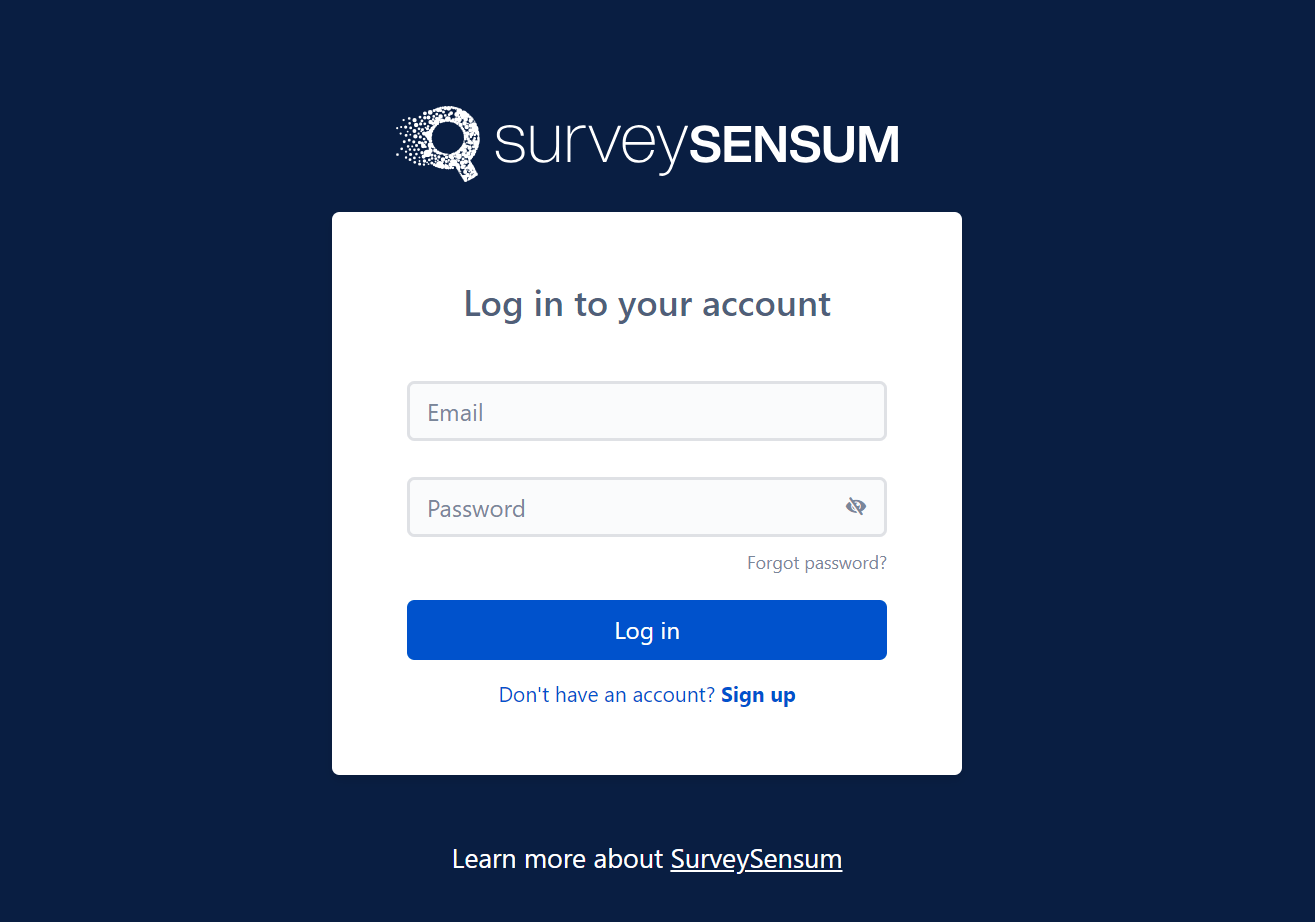
STEP 2: Click on “Create a survey”, and select CSAT in-built survey template.
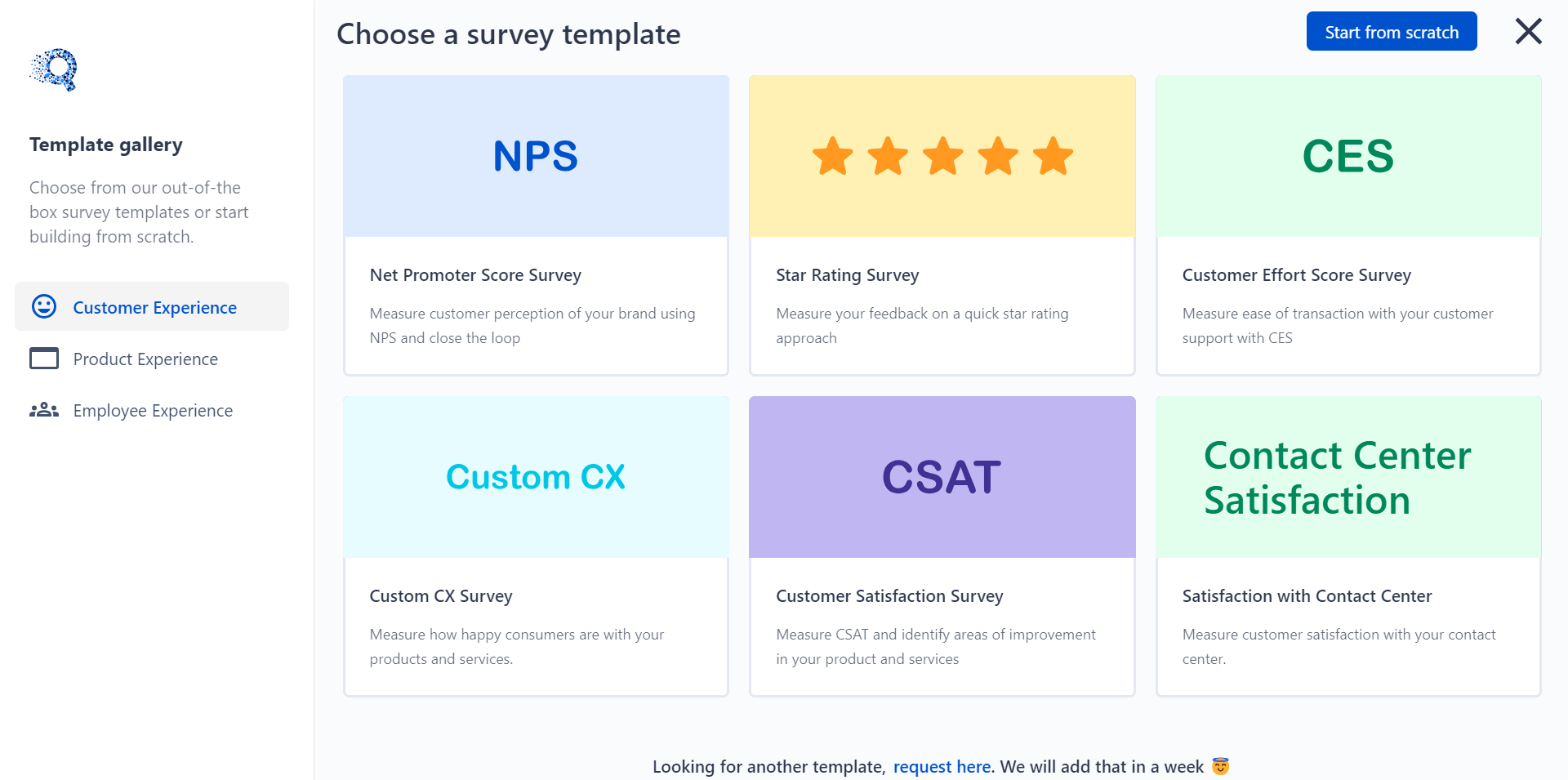
STEP 3: Edit the CSAT template as per your business’ branding and then click on the ”Share” survey button.
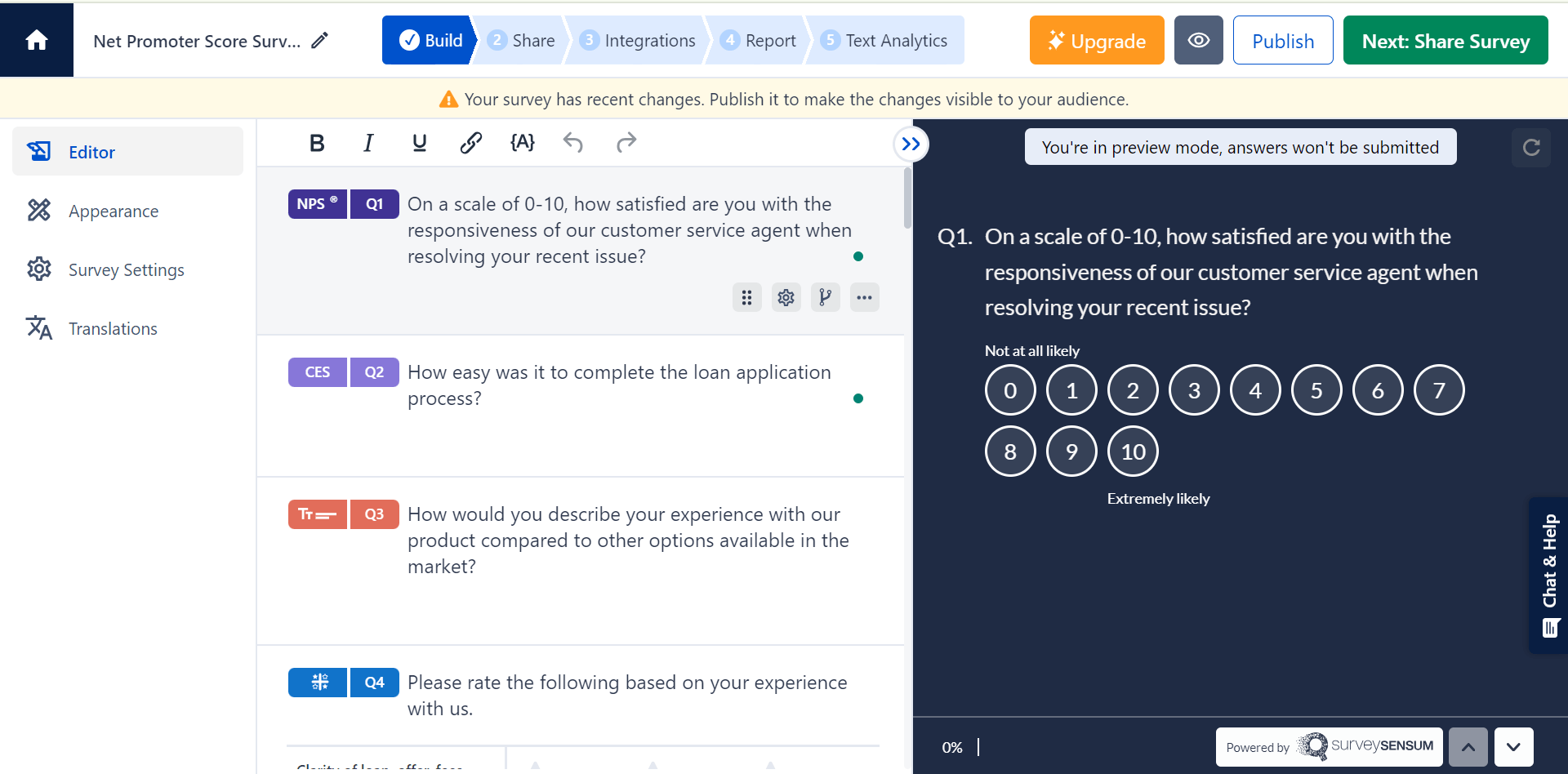
STEP 4: After sending out your CSAT surveys, you will receive real-time feedback updates on your dashboard. This allows you to monitor customer satisfaction levels, stay informed, and take timely action to address any issues or improve customer experiences.

STEP 5: But when you start receiving feedback in thousands, analyzing it can be cumbersome. So, utilize Text Analytics. It processes large volumes of text data, identifying key themes, sentiments, and trends in just a few seconds!

Design surveys that prompt users to send in their responses! Launch Your First CSAT Survey and revolutionize your customer experience!
Here are some best practices with which you can create effective CSAT surveys:
By following these best practices, trust me, your CSAT surveys will yield valuable insights for you.
Now let’s talk about how to collect customer satisfaction data.
You can collect CSAT data through the following methods:

Send surveys online to gather instant feedback.
To use online surveys, create them with any survey tool like SurveySensum, and send them through the channels where your customers are like WhatsApp surveys.
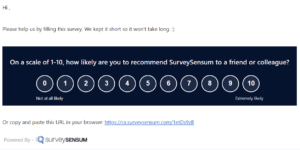
Do you have your customers’ emails?
If yes, then use them now to send personalized surveys right away.
And add the survey in the email body which lets your customers fill out the survey within the email.
Have you tried IVR yet?
If not, then you must begin because it can catch responses from touch-tone responses or voice recognition as well.
And it is best for those customers who are unable to access the internet or prefer the phone call to give feedback. Also, the system records the gathered feedback to later process and analyze it.
You must ensure a representative sample size to gather accurate CSAT customer feedback. This can be achieved by using random or stratified sampling, allowing you to include customers from different demographics, locations, or segments.
By considering these given methods, you can gather reliable CSAT feedback to improve customer satisfaction effectively.
Don’t waste time waiting and collect your valuable customer feedback today with SurveySensum! Collect & analyze CSAT feedback the right way!
Now that you’ve gathered all this feedback, how can you analyze and interpret the CSAT survey results?
So, you’ve collected a bunch of valuable data through different types of customer satisfaction surveys from your customers.
Now comes the exciting part: analyzing that data to gain insights and drive improvements.
Let’s dive in:
Remember, analyzing CSAT survey data is an ongoing process.
Regularly monitor and track your CSAT scores over time to evaluate the impact of your actions and ensure continuous improvement. Furthermore, by effectively analyzing and acting upon your CSAT survey data, you’ll create a customer-centric approach that fosters not only loyalty and growth but also long-term success.
Now it’s time to use the gathered CSAT survey data in the best way possible.
Leveraging the gathered CSAT survey data can be a powerful tool to improve customer satisfaction. Therefore, after analyzing the data, you can proceed to utilize it effectively.
These are the customer satisfaction best practices to follow, as exemplified by Mercedes-Daimler, an automotive brand that leveraged these methods to achieve an impressive 30% increase in its CSAT score.
To wrap up our entire discussion on how to calculate CSAT scores, here are some quick snapshots:
If you want to maximize the benefits of customer satisfaction surveys, invest in an effective customer satisfaction software like SurveySensum. It has advanced survey creation capabilities, robust data analysis tools, and actionable insights, empowering you to optimize customer satisfaction and drive your business’ success.
Invest in customer experience and leverage valuable insights from your CSAT surveys with SurveySensum!
Patient satisfaction scores are typically calculated by dividing the total number of satisfied patients by the total number of respondents and multiplying by 100 to get a percentage.
The Customer Satisfaction Score average is calculated by adding up all the individual CSAT scores and dividing by the total number of responses.
In Business Process Outsourcing (BPO), the CSAT score calculation formula is the same as general CSAT: (Number of satisfied customers / Total number of customers surveyed) x 100.
Net Satisfaction Score (NSat) is calculated by subtracting the percentage of dissatisfied customers from the percentage of satisfied customers. The formula is: (Percentage of satisfied customers – Percentage of dissatisfied customers) x 100.
To do the CSAT calculation using a 5-point scale, follow these steps: First, ask customers to rate their satisfaction with your product or service on a scale of 1 to 5, where 1 is “very dissatisfied” and 5 is “very satisfied.” Next, count the number of respondents who selected 4 (“satisfied”) and 5 (“very satisfied”). Add these numbers together and divide by the total number of responses. Finally, multiply the result by 100 to get the CSAT score as a percentage.
Unlock the full potential of your customer satisfaction surveys with SurveySensum.
